Simrad NSS 4, a new Simrad flagship chart plotter
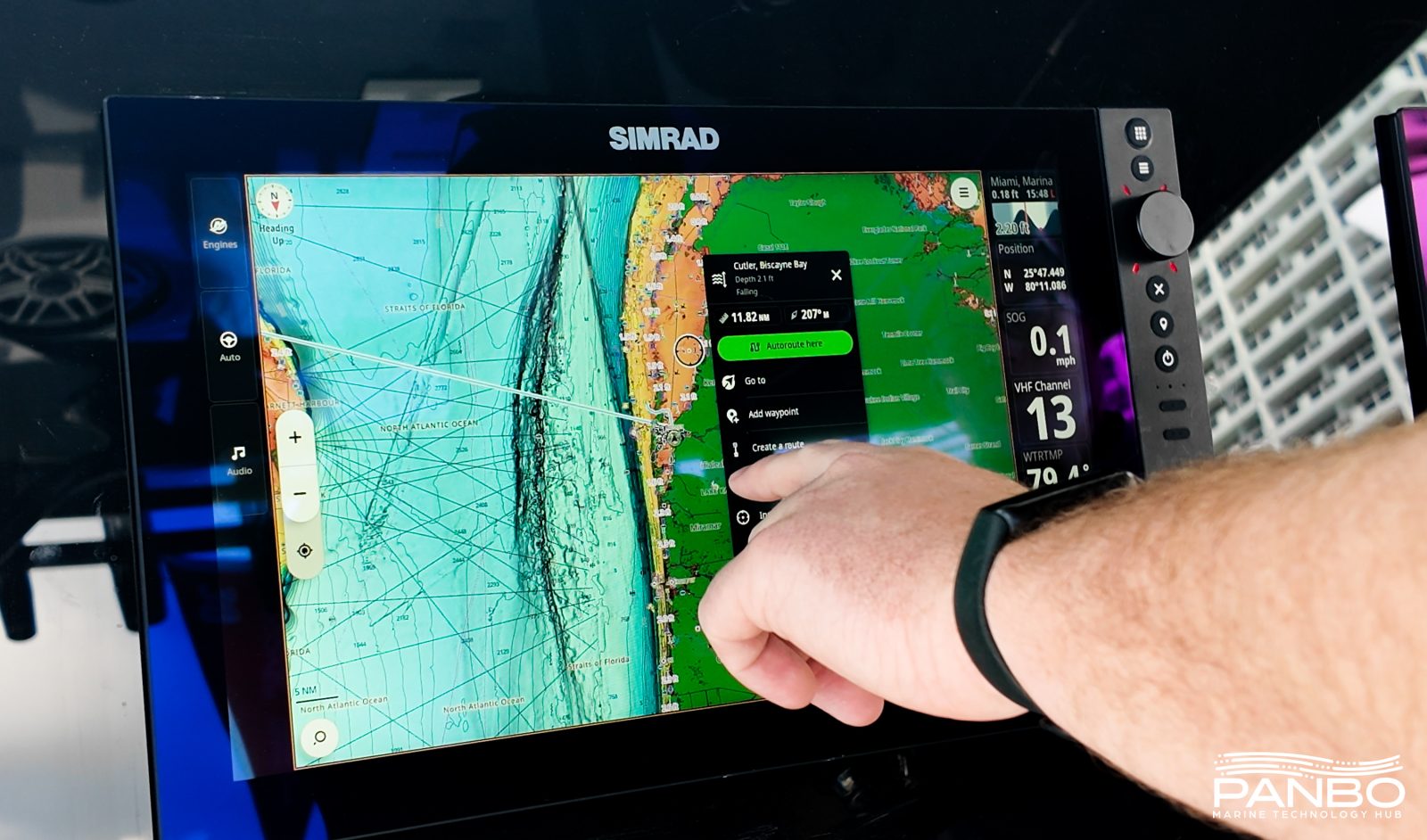
It’s been three years since Simrad introduced the NSX at the 2022 Miami International Boat Show. That chart plotter was the first to run Simrad parent Navico’s new Neon operating system. At the time, I expected that Simrad would introduce new models across their line running the Neon. Although that took a bit longer than many, myself included, may have expected, that’s just what they’ve done. The new NSS 4 — and corporate sibling Zeus SR — updates the flagship of their lines with new hardware and a crisp, modern operating system.
The Simrad NSS4 and B and G Zeus SR will both be available in 10, 12, and 16 inch models. All models offer both touch screens and physical controls. They offer models with or without a built in sonar sounder. Like their Neon operating system sibling, the NSX, all models utilize C-Map’s X-Gen charts. The 16-inch model utilizes an IPS display with more than 1,200 nits of brightness and a resolution of 1920 by 1080 pixels. The 12 and 10 models offer the same brightness but a resolution of 1280 by 800 pixels.
All models have an HDMI input port and can output HDMI via an adapter connected to the USB-C connector on the back. A dual-slot MicroSD card reader sits easily accessible on the bottom right corner of the displays. Each display also features both a 1 gigabit per second M12 X-Coded interface and a 100 mbps legacy Simrad yellow Ethernet connector. All models are compatible with Halo radars as well as 3G and 4G broadband models.
The 10-inch model is $2,599 with a basemap and no sonar and $2,899 with Discover X charts and built in Sonar. The 12-inch model is $3,799 with basemap and no sonar and $4,199 with Discover X and sonar. The 16-inch option is $5,799 with basemap and no sonar and $6,199 with Discover X and sonar. That pricing puts the Navico plotters at the top of the market when compared to Raymarine and Garmin’s options, but not by much.
Looking back at my early coverage of the NSX, I can’t help but be reminded of how visually appealing and clean the software looks. However, I am also reminded of the uneven performance I experienced. Navico made the decision to introduce Neon in a value-oriented model and that apparently created some challenges for them with balancing performance and cost. Every NSX unit I’ve tested and used has felt a bit underpowered. Additionally, especially the early software on the NSXs wasn’t bug-free. In my testing, I found some challenging and sometimes annoying quirks and bugs with the software. However, my early NSS 4 experience has been much smoother.
The time I spent with the NSS4, albeit in simulation mode, left me with the impression that Navico has been busy cleaning up the software and delivering a better user experience. In addition to resolving some of the issues with earlier software, the new revision of Neon also offers quite a few user interface refinements. As Navico’s Adam King points out in the video above, the context menus have been reorganized to deliver the options most often needed at a single press of the screen.’
The combination of touch screen and buttons works very well on the NSS 4. It is worth noting that the physical controls aren’t a complete alternative to the touchscreen. The physical wheel is only a wheel primarily used for zooming. It doesn’t offer directional control so you will need to drag around the chart with the touchscreen. I found the physical controls’ ability matches what I typically use them for. Zooming in and out, quickly bringing up a menu or exiting out of one.
I will be receiving an evaluation NSS 4 and I’m definitely looking forward to spending time on the water with it. I’m quite excited to get hands on experience with the new chart plotters. Despite the issues I mentioned, I really like the NSX and expect the NSS 4 to only improve upon that experience.


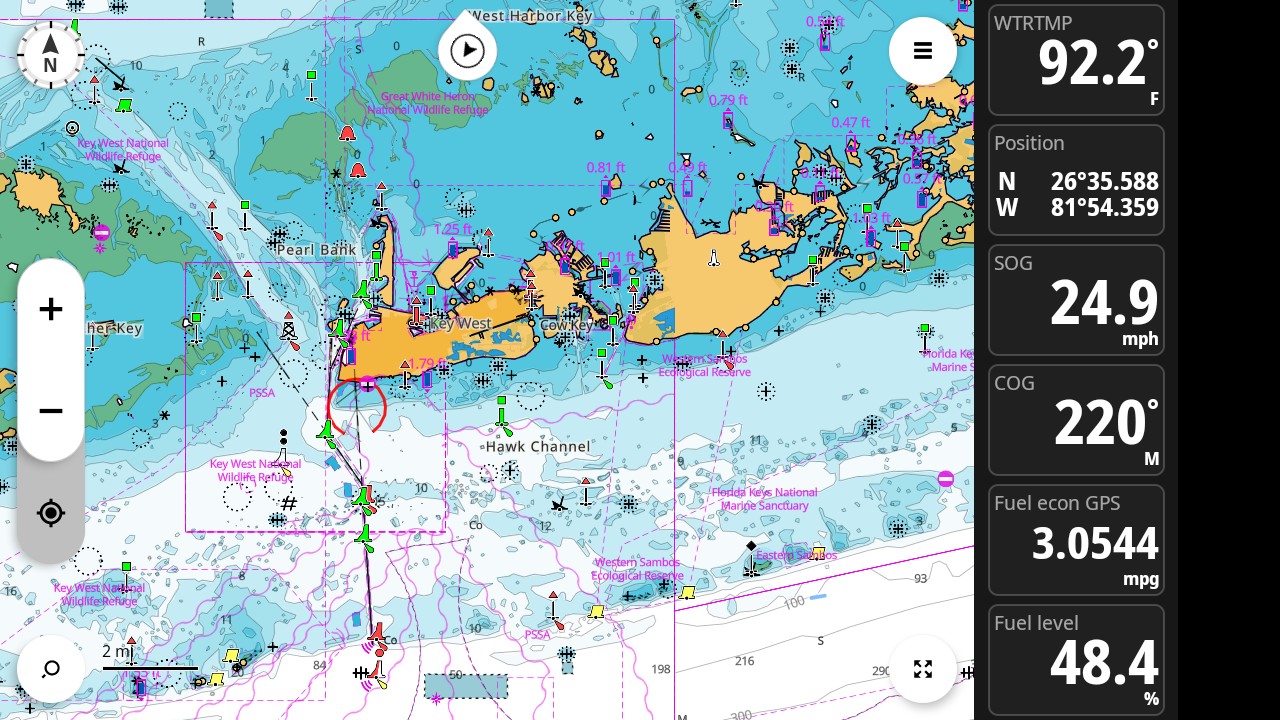
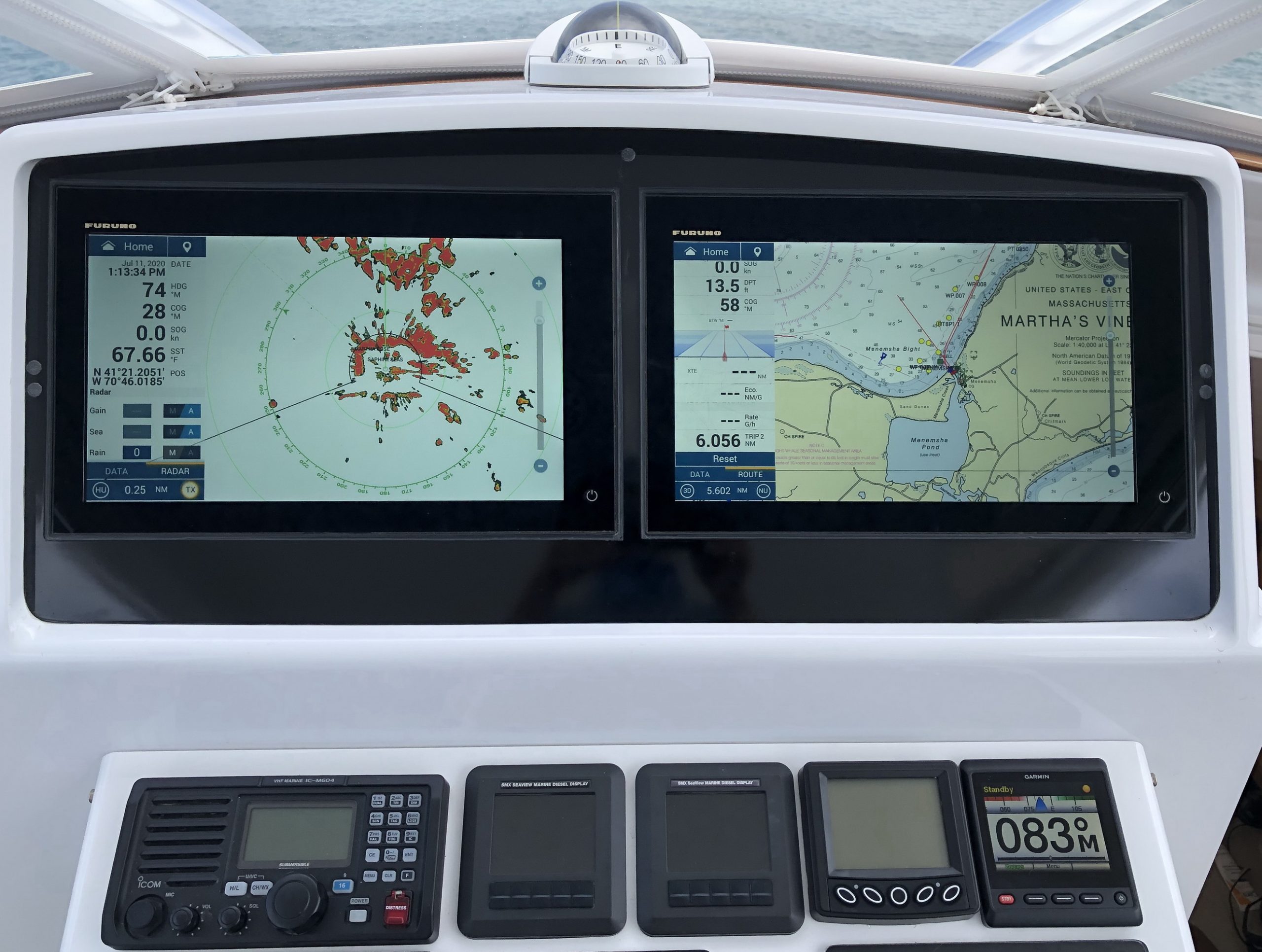
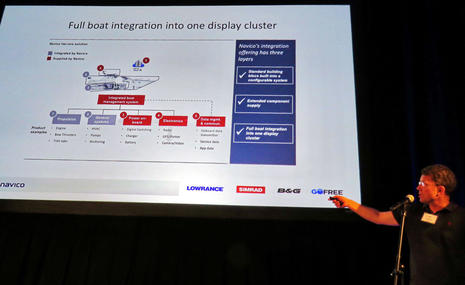
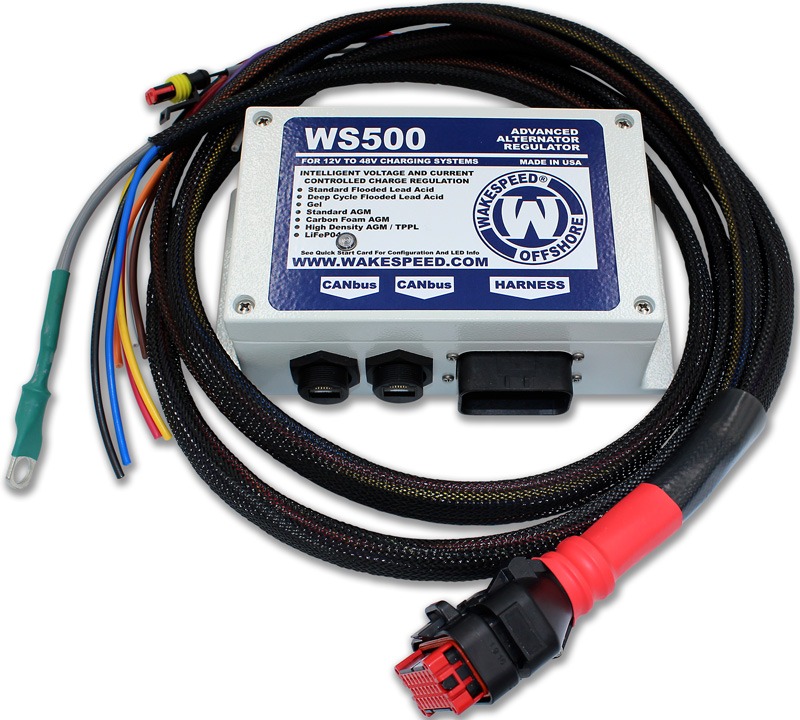







As much as I like the Simrad / Navico UI, I think they’re crazy for the pricing on the NSS4 units. Simrad has priced themselves solidly above Furuno for MFDs at this point (and they were already more expensive for radar and other equipment), which in my mind would take Simrad right out of consideration in most cases.
They do seem to be on the high end, but it didn’t look like they were that far above others. It’s a little hard to compare because the models don’t line up perfectly, but I’ll try and construct a few comparisons:
They’re certainly not far above the others, but they’ve edged out Furuno (I hadn’t realized that Raymarine also did), particularly when you compare the Simrad models with sonar (which brings the NSS4 12″ up to a whopping $4199, making it the most expensive of the bunch by a decent margin). Furuno has always had the reputation of being pricey and some of the best, so to see them cheaper than multiple others now is surprising to me.
Radar is in a similar situation now, at least for the domes. The Furuno DRS4D-NXT sells for $2695, but the comparable Simrad Halo24 goes for $3099.
From what I remember, last time I priced autopilot setups that would fit my boat, the Furuno 711C came out a few hundred cheaper than the Simrad gear once the pump and everything was added in.
this was quite a good video and awesome Adam bringing some kiwi love. the UI and features looks rather refined in this and some interesting comments reguarding trolling motor support. perhaps power pole is coming next?
The pricing thing is interesting. Furuno is considerably more expensive than everyone “perhaps close with raymarine” in australia.
Do the new models fit into the cutouts of their predecessor for an easy upgrade?
It is my understanding that the new models are slightly different dimensions.
-Ben S.
Interesting review, Ben. Any word on networking compatibility with existing NSS3 units? That was a problem with the NSX I know, it had limited or unsupported chart/sonar/radar sharing, due to the different OS…
Grant,
What I heard is that networked resource sharing will work. So, a networked radar or sonar would work. But chart sharing between generations won’t. I suspect, but don’t know for sure, that internal sonar sharing also won’t work.
-Ben S.
Any word if the B&G Zues SR will network with the H5000 Hercules and newer sailing computers?
It does mention “Unlock next-level performance with our Triton Edge and Hercules sailing processors”. All B&G MFD’s since the Zeus 2 support H5000, including the Android based Zeus S so I would be very surprised if it didn’t.
There is a dedicated Sailing Processor app on ZeusS and ZeusSR that opens the H5000, Triton Edge or Hercules/HerculesWTP webserver.
Noticed this statement in the NSS4 FAQ: “Navionics is not supported”
That’s a bold strategy, Cotton. Let’s see if it pays off 🙂
Robert,
With Navico owning C-Map and Garmin owning Navionics, this isn’t surprising. It’s also inline with chart support on NSX, also running Navio’s Neon operating system. Fortunately, the X-series charts are full featured and visually very appealing. I can’t speak to their global coverage so there could be areas where the lack of Navionics support is a detriment.
-Ben S.
It may not be surprising, but limiting chart choices doesn’t seem like a good thing to me. Even if multiple sources have the same area covered, sometimes one is known to be more accurate in a given area. Plus it’s a step towards Navico becoming Garmin and wanting to lock you only into their ecosystem, which I’m no fan of (and I’m no fan of Garmin’s marine equipment in general).
I’m merely speaking from the dealer end. Many boaters have Navionics embedded in their brain to the point that it is the most important aspect of their MFD.
I don’t know the other side of this; maybe if I did, I would have some empathy for the complexity of the mapping business. Absent that understanding, it seems without multiple mapping products competing on each hardware platform, there is less reward for mapping products to benefit from continued investment and innovation.
an argument could be made that its even more important to innovate.. as now “its looking more like” MFD brands being tied to one mapping company… have made “their maps” a key deciding point on wether somebody will buy their entire ecosphere.
if simrad offered all/most mapping brands.. well its easy for the dealer to say “sure pick what ever you like” however now simrad has to also show their mapping is above other brands.
we have seen this already with CMAP…. back when it was a Boeing product Cmap was…..”at least down here in australia”……..okay.. not amazing.. but.. not bad…. Navionics still had the lions share, with Garmin bluecharts doing their thing in the background.
But since Navico purchased Cmap we have seen their mapping improve a great deal.
food for thought
“The 12 and 10 models offer […] a resolution of 1280 by 800 pixels.”
Considering the price of these vs those of Furuno, I would have thought they wouldn’t have had to cheap out on the screens. The Furuno TZ10X has a resolution of 1920×1200, and the 13X has one of 1920×1080.
I have a full complement of B&G Zeus 3S chart plotters one at the helm, one at the nav station, one 9″, one 12″. This new hardware has no backward compatibility with these units, so the only way for me to get one on my network and make it useful is to replace both, and since they have no echo sounder, I have to buy an s3100 for good measure. Outstanding.